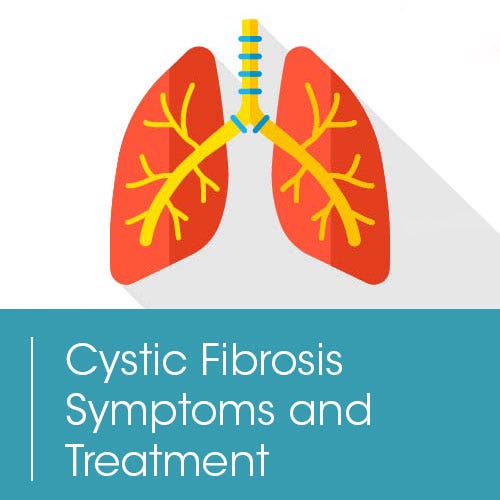Research indicates that children who are diagnosed with cystic fibrosis early have better outcomes. Soon after birth, babies in many countries including the United States and Canada will have a simple blood test done to screen for cystic fibrosis (CF) and other diseases. [1] Early screening, detection and diagnosis lead to better outcomes for children with CF. [1]
Cystic fibrosis is a genetic disorder which affects the lungs and digestive system—thick, sticky mucus is produced, impairing the function of the lungs and pancreas [2], an organ responsible for secreting enzymes responsible for proper digestion of food. Symptoms that arise from CF are due to this mucus.
Early symptoms of CF include respiratory symptoms like coughing and wheezing, and production of thick mucus (also known as phlegm or sputum), as well as digestive symptoms such as greasy looking stools that may be pale in color or seem bulky, due to poor nutrient absorption. [3] Children who are unable to process nutrients, as happens in CF properly, can often experience poor growth, known as “failure to thrive”—in CF, this is usually in spite of having an appetite that seems excessive. [4] Parents may also notice excessively salty sweat, such as when kissing their baby. [3] As children with CF grow up, they can experience additional problems related to their CF, such as CF-related diabetes and osteoporosis stemming from poor nutrient absorption. [5] As CF is a progressive disease, these additional diagnoses may indicate a decline in their condition, including respiratory function. [5]
Cystic fibrosis treatments have significantly improved in recent years. Chest physiotherapy is a core treatment strategy and may be done manually by clapping on the back and chest of a person with CF to break up mucus, or it may be done by a machine known as a vest, which produces vibrations to help clear mucus. [6] Other devices are also available to help with airway clearance. Inhaled medicines usually delivered by nebulizer, include bronchodilator breathing treatments, inhaled hypertonic saline, inhaled antibiotics, and corticosteroid medications like prednisone to help reduce inflammation in the lungs. [6] People with CF-related digestive problems will also take enzymes with the food they eat to help digest it, as well as nutritional supplements and may take insulin for CF-related diabetes. [6] Newer medications target specific gene mutations, and improve symptoms. [6][7]
Information on this page is for reference and educational purposes only. For more information about cystic fibrosis, talk to your doctor or primary care provider.
Page last updated: October 14, 2018
Sources:
[1] Cystic Fibrosis Foundation. Newborn screening for CF. https://www.cff.org/What-is-CF/Testing/Newborn-Screening-for-CF/
[2] Cystic Fibrosis Foundation. About cystic fibrosis. https://www.cff.org/What-is-CF/About-Cystic-Fibrosis/
[3] Baby’s First Test. Conditions: Cystic Fibrosis. https://www.babysfirsttest.org/newborn-screening/conditions/cystic-fibrosis-cf
[4] GI Kids. Digestive topics: Cystic Fibrosis. https://www.nationaljewish.org/conditions/idiopathic-pulmonary-fibrosis-ipf/overview/ipf-management/lung-transplantation-is-it-right-for-you
[5] Mathiesen, I. H., Pressler, T., Oturai, P., Katzenstein, T. L., Skov, M., Frikke-Schmidt, R., & Hitz, M. F. (2018). Osteoporosis Is Associated with Deteriorating Clinical Status in Adults with Cystic Fibrosis. International journal of endocrinology, 2018.
[6] Medscape. Cystic Fibrosis Treatment and Management. https://emedicine.medscape.com/article/1001602-treatment
Kerri is a blogger, coach, quantified self-er, and ePatient. A former gym class hater, she now holds a Bachelor of Physical and Health Education. Diagnosed with asthma in 2008 when she was 16, Kerri believes she is not defined by her diagnoses, but rather that they help explain her. Kerri writes for work and fun (often simultaneously!) on topics including asthma, ADHD, learning issues, patient engagement, and technology. Airplanes, t-shirts and cupcakes are among her favorite things.





